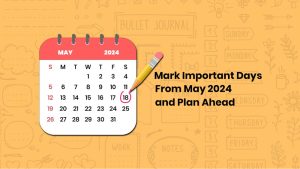
A step-by-step guide to creating an effective project plan
Launching a new project can be a thrilling and difficult job. It is essential to have a clear project plan in place to guarantee its success. A project plan outlines the goals, tasks, deadlines, and resources needed for the project and acts as a roadmap. We’ll walk you through the process of creating a successful project plan that will set your project up for success in this blog post. Creating a project plan involves several key steps to ensure that your project is well-organized, achievable, and successful. Here’s a step-by-step guide to help you create an effective project plan.
- Define Project Objectives:
Clearly outlining the project objectives is the first stage in writing a successful project plan. With this project, what are your goals? Determine the intended results and make sure they complement the overarching objectives of your business. You may give your project team a clear direction by defining SMART objectives—specific, measurable, achievable, relevant, and time-bound. - Identify Stakeholders and Define Roles
List every internal and external stakeholder who is participating in the project. Make sure you clearly outline their expectations, duties, and obligations. By taking this step, you can make sure that everybody is aware of their responsibilities and is working toward the same goal. - Conduct a Risk Assessment
Determine any risks that might affect the project’s outcome. Evaluate each risk’s likelihood and possible consequences. Throughout the project, this knowledge will be essential for managing uncertainty and creating backup plans. - Create a Work Breakdown Structure (WBS)
Use a Work Breakdown Structure (WBS) to divide the job into smaller, more manageable tasks. The work is divided into deliverables, tasks, and phases using this hierarchical decomposition, which gives a clear visual depiction of the project’s structure. It acts as the starting point for creating the project schedule. - Develop a Project Schedule
To develop a thorough project schedule, use the WBS. Determine dependencies between activities, assign resources to each job, and project timelines. A Gantt chart is a widely used tool for project schedule visualization that makes it simple to assess progress and identify important paths. - Allocate Resources
Identify and assign the resources required for every task. This covers the people, tools, technology, and any other resources needed to finish the job successfully. Make sure that the distribution of resources follows the project timeline. - Define Milestones
Set important checkpoints to indicate important stages in the project schedule. Milestones give a sense of accomplishment, make it easier to monitor development, and act as benchmarks for project assessments. Share these accomplishments with the team and other relevant parties. - Develop a Communication Plan
Specify the communication protocol that will be followed during the project. Establish procedures for holding frequent team meetings, updating stakeholders on progress, and communicating with them. Maintaining alignment and keeping everyone informed requires effective communication. - Create a Budget
Develop a detailed budget that outlines the estimated costs for each aspect of the project. Include costs for resources, materials, equipment, and any other relevant expenses. Regularly monitor and update the budget as the project progresses. - Monitor and Control
Establish a thorough monitoring and control system to keep tabs on developments, spot deviations, and quickly resolve problems. Compare the project’s progress to the plan regularly and make any revisions. By doing this, the project’s goals are met and it remains on course.
One of the most important steps in effective project management is developing a thorough project plan. These steps will help you create a thorough strategy that will enable your project to be carried out successfully. Remember that flexibility is essential and that during the project lifecycle, the plan should be evaluated and modified frequently to account for obstacles and changes. Your team will be better able to successfully traverse the project’s difficulties if you have a well-crafted project plan in place.



